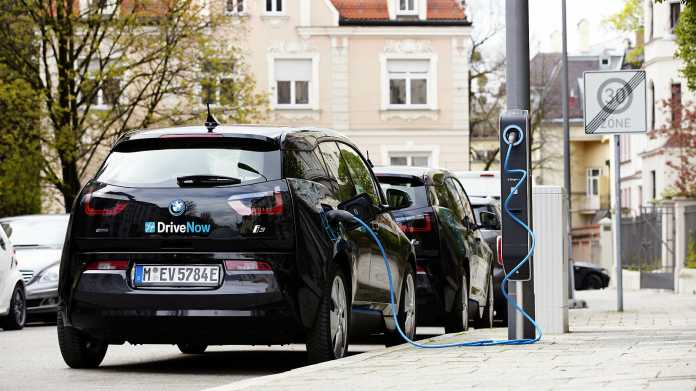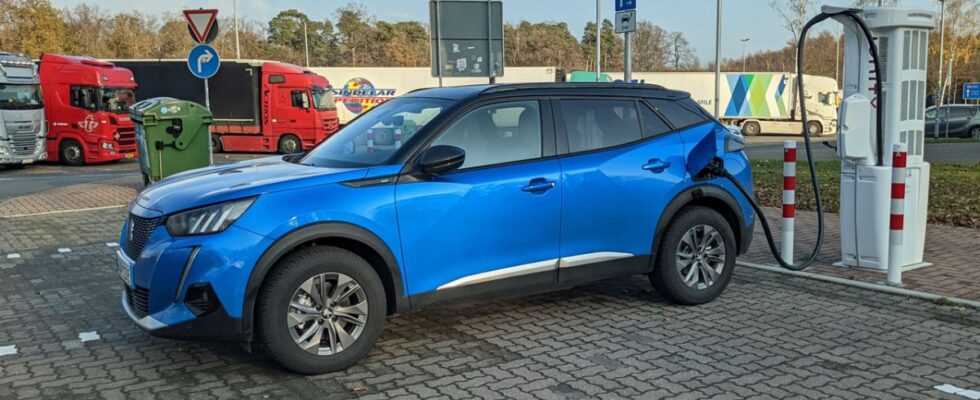The new federal government has set ambitious goals for climate protection. The main focus is on rapid decarbonization. The electricity mix needs less CO2 included per generated kilowatt hour. Since the German phase-out of nuclear power is being maintained, the proportion of green electricity must increase drastically. It should be 80 percent by 2030. That is, at least that much can already be said, without a massive acceleration of the expansion of wind and photovoltaic systems.
Put Germany on the “target climate path”
Federal Economics and Climate Protection Minister Robert Habeck (Greens) therefore wants to initiate comprehensive immediate measures. A first package with urgent laws and projects is to be decided in the cabinet by April, like that dpa learned from the ministry. Overall, an “immediate climate protection program” with all laws, ordinances and measures is to be concluded by the end of 2022, so that all measures can take effect from 2023 onwards. The aim is therefore to put Germany on the “target climate path”.
Drastic backlog
Habeck wants to present an “opening balance” on climate protection on Tuesday (January 11th) in Berlin. This balance shows how much this is in Germany behind expectations, it said in the ministry. The climate targets for 2022 would in all probability be missed, and it will be difficult for 2023 as well. In the ministry there is talk of a “drastic backlog”.
According to dpa information, a key point of the planned immediate measures is an amendment to the Renewable Energy Sources Act (EEG). The tender volumes for renewable electricity from wind and sun are to be increased. The traffic light coalition wants to increase the share of renewable energies to 80 percent by 2030. Last year, according to preliminary calculations by industry associations, this was a good 42 percent.
Growing demand for electricity
The expansion of green electricity should in future be in the “overriding public interest”. According to the prognosis of the climate protection ministry, the electricity demand will increase from currently around 560 to 715 terawatt hours by 2030. Habeck’s predecessor Peter Altmaier (CDU) had estimated electricity consumption to be 658 TWh by 2030. The demand for electricity is growing, among other things, due to the increasing electrification of industrial processes, more heat pumps and more electric cars.
However, the expansion of wind power on land and at sea is currently at an absolute low compared to the last ten years, according to the ministry. From the industry’s point of view, the greatest obstacles include insufficiently designated areas, lengthy planning and approval procedures and conflicts with species protection. In addition, there are often protests against the construction of wind farms on site.

Expand wind energy
With a “wind-on-land law” Habeck now wants to anchor two percent of the country’s area legally for wind power. That would be significantly more than before. With the new area target, Habeck has to work together with the federal states and municipalities. In addition, the expansion of wind energy should be “reconciled” with species protection and the prerequisites for faster planning and approval procedures should be created, according to the ministry. In addition, short-term land potentials for onshore wind power should be developed, for example by reducing the distances to so-called radio beacons and weather radars.
The latter in particular will not go without protests. The German Weather Service (DWD) warns against reducing the previous distances between the weather radar and the ever higher wind turbines. “Due to the operation of the wind turbines, disturbances in the radar data are to be expected,” says a spokesman for the DWD Daily mirror. As a result, the weather forecasts would be significantly more inaccurate. The flash floods last summer showed that such data will become more important in the future.
Reform of the EEG surcharge
From 2023, as foreseen in the coalition agreement, the billions in the EEG surcharge will be financed through the federal budget. This should relieve consumers of the recent sharp rise in electricity costs. Habeck is also planning additional funding programs for hydrogen technology, a “climate-neutral building strategy” and a “solar acceleration package”. This includes, for example, an improvement in tenant electricity, i.e. electricity that comes from solar systems on the roof of a residential building and is consumed directly in this building or in the vicinity. In addition, as envisaged in the coalition agreement, solar requirements are to be enshrined in law on new buildings.
In terms of industrial policy, Habeck wants to create the legal and financial prerequisites for so-called climate protection difference agreements. The industry needed a “reliable funding and investment framework” for entry into climate-neutral production processes, it said. Companies should be able to plan costs. Further measures from other departments are to be incorporated into the immediate program, for example from the Ministry of Transport led by FDP politician Volker Wissing.

“Not without imposition”
In view of the stricter climate targets by 2030 and the goal of climate neutrality by 2045, “significantly more” must be done in less time, the ministry said. It is necessary to triple the CO2-Deductions compared to the previous decade. This is a big task that is tantamount to an “ultra run”. At the beginning of December, Habeck described the planned, much faster expansion of renewable energies as a major effort. This will “not be unreasonable”.

The previous black and red government decided last year to want to become climate-neutral by 2045, i.e. to only emit as many greenhouse gases as can be bound again much earlier than planned. The Habeck Ministry said: “If we do it right and trigger a dynamic, we can experience a boom in new technologies, with new industrial added value and jobs.” Climate protection requirements should also be designed to be socially acceptable.
(mfz)
